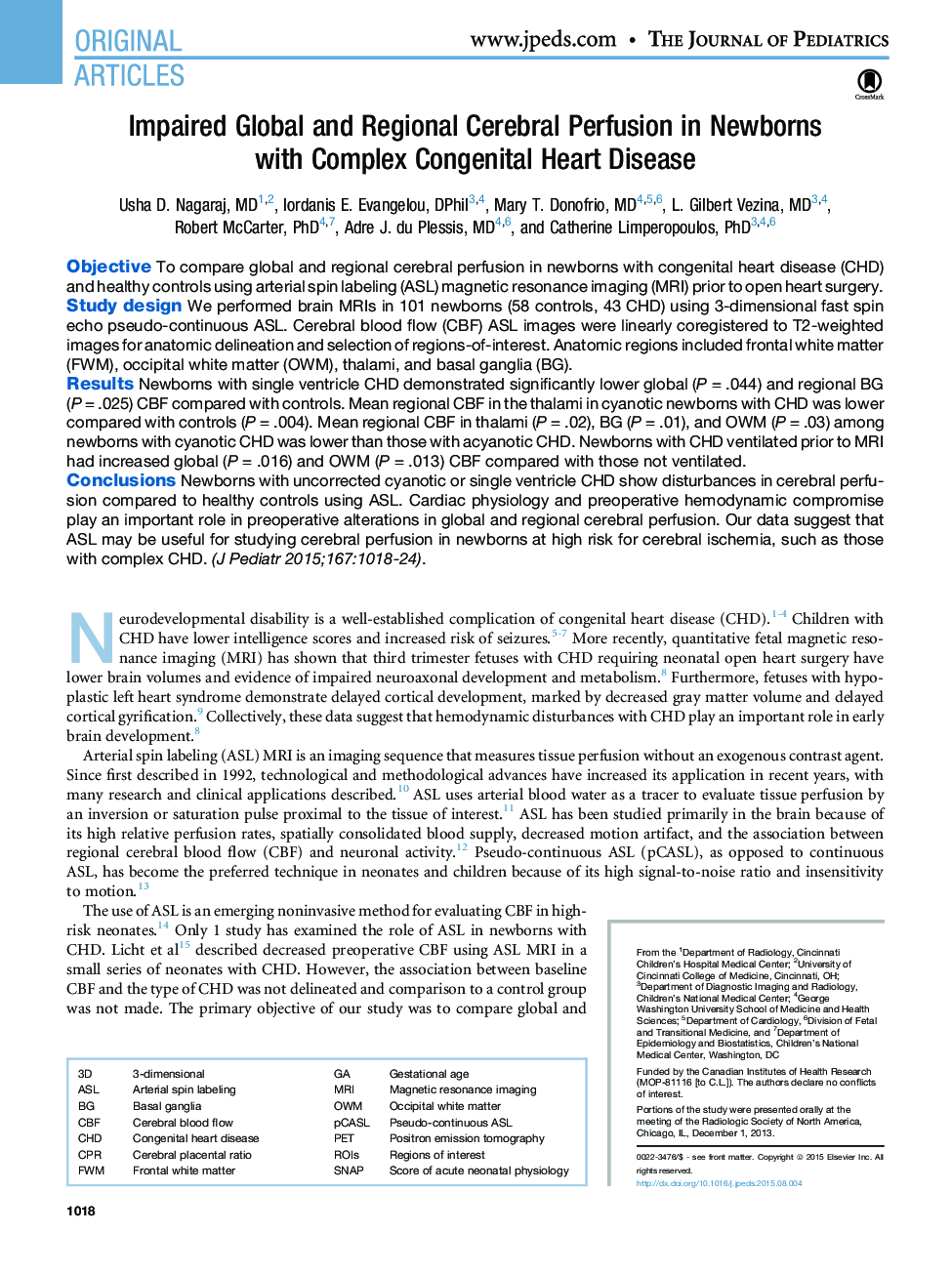| Article ID | Journal | Published Year | Pages | File Type |
|---|---|---|---|---|
| 4164716 | The Journal of Pediatrics | 2015 | 7 Pages |
ObjectiveTo compare global and regional cerebral perfusion in newborns with congenital heart disease (CHD) and healthy controls using arterial spin labeling (ASL) magnetic resonance imaging (MRI) prior to open heart surgery.Study designWe performed brain MRIs in 101 newborns (58 controls, 43 CHD) using 3-dimensional fast spin echo pseudo-continuous ASL. Cerebral blood flow (CBF) ASL images were linearly coregistered to T2-weighted images for anatomic delineation and selection of regions-of-interest. Anatomic regions included frontal white matter (FWM), occipital white matter (OWM), thalami, and basal ganglia (BG).ResultsNewborns with single ventricle CHD demonstrated significantly lower global (P = .044) and regional BG (P = .025) CBF compared with controls. Mean regional CBF in the thalami in cyanotic newborns with CHD was lower compared with controls (P = .004). Mean regional CBF in thalami (P = .02), BG (P = .01), and OWM (P = .03) among newborns with cyanotic CHD was lower than those with acyanotic CHD. Newborns with CHD ventilated prior to MRI had increased global (P = .016) and OWM (P = .013) CBF compared with those not ventilated.ConclusionsNewborns with uncorrected cyanotic or single ventricle CHD show disturbances in cerebral perfusion compared to healthy controls using ASL. Cardiac physiology and preoperative hemodynamic compromise play an important role in preoperative alterations in global and regional cerebral perfusion. Our data suggest that ASL may be useful for studying cerebral perfusion in newborns at high risk for cerebral ischemia, such as those with complex CHD.
